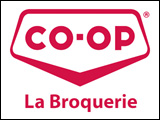The Canadian Pork Council is advising pork producers to be watching closely for symptoms of Seneca Valley Virus and avoid shipping any pigs with signs of the infection.
Last Tuesday the United States Department of Agriculture informed the Canadian Food Inspection Agency that 13 Canadian origin sows exported to the U.S. in 6 separate loads for slaughter had vesicular lesions and 2 loads of sows were refused entry into the U.S. the next day when vesicular lesions were identified at the port of entry triggering investigations in both countries.
Dr. Egan Brockhoff, the Veterinary Counsel with the Canadian Pork Council, says, while foreign animal disease tests ruled out Foot and Mouth Disease, Seneca Valley Virus was identified.
The greatest concern is that this virus presents identically to Foot and Mouth Disease virus so it causes disruptions in hog transport, it causes disruptions in processing and it causes disruptions of shipments from farms to other various sites so we really need pork producers to pay very close attention to animals before they’re getting shipped and moved to markets and certainly in particular their cull sows as well as their feeder pigs and nursery pigs.
Look for signs of lameness, look for signs of redness around the snout and around the mouth, pigs going off feed. If we can prevent those pigs from getting loaded, then we can prevent these disruptions in market and transport and so on and so forth.
At this time we really want pork producers just to be aware of what the clinical signs are. If they see anything suspicious, please contact their herd veterinarian and then the veterinarian, at that time, can make the determination whether they should bring in the CFIA immediately and get some testing done to determine if it’s actually a foreign animal disease or just this disruptive Seneca Valley Virus.
~ Dr. Egan Brockhoff, Canadian Pork Council
Dr. Brockhoff says the prevalence of Seneca Valley Virus in Canada is not known but it has popped up sporadically since 2015.



